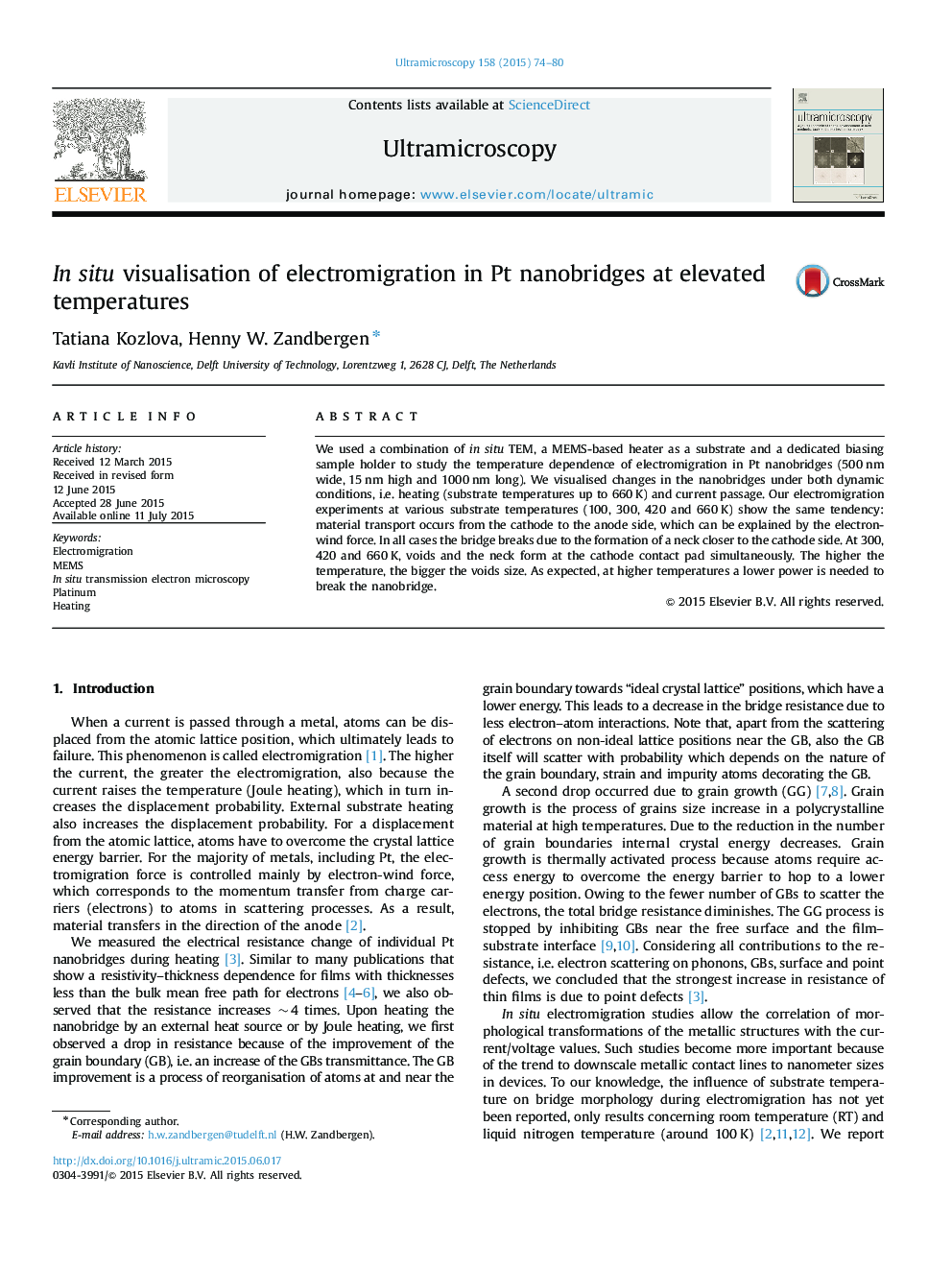| Article ID | Journal | Published Year | Pages | File Type |
|---|---|---|---|---|
| 8038055 | Ultramicroscopy | 2015 | 7 Pages |
Abstract
We used a combination of in situ TEM, a MEMS-based heater as a substrate and a dedicated biasing sample holder to study the temperature dependence of electromigration in Pt nanobridges (500Â nm wide, 15Â nm high and 1000Â nm long). We visualised changes in the nanobridges under both dynamic conditions, i.e. heating (substrate temperatures up to 660Â K) and current passage. Our electromigration experiments at various substrate temperatures (100, 300, 420 and 660Â K) show the same tendency: material transport occurs from the cathode to the anode side, which can be explained by the electron-wind force. In all cases the bridge breaks due to the formation of a neck closer to the cathode side. At 300, 420 and 660Â K, voids and the neck form at the cathode contact pad simultaneously. The higher the temperature, the bigger the voids size. As expected, at higher temperatures a lower power is needed to break the nanobridge.
Related Topics
Physical Sciences and Engineering
Materials Science
Nanotechnology
Authors
Tatiana Kozlova, Henny W. Zandbergen,
